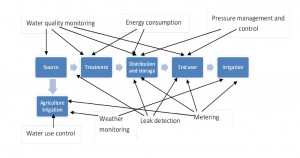Interdisciplinary knitting is vital for solving a problem like this. However, who should be the Knitter? Coming from a project management background, I suggested the team to come up with a charter for the solution we are proposing (The model community). I have seen the importance of coming up with a project charter to move towards the desired solution. However, the team was not excited about a project charter. Objective problem solution has been the preferred path in engineering.
How to develop a project charter is as follows:
1. Project vision, objectives, scope and deliverables.
The first step is to define the vision. This states the purpose of the project and defines the end goal of the project.
Based on the vision, you must document the objectives of the project. These objectives describe what must be achieved by the project. You can use the SMART (Specific, Measurable, Achievable, Realistic and Time-bound) way to describe them.
When you have documented the vision and objectives, you can then document the scope. The scope will describe the boundaries of the project by describing how the business environment will be changed when delivering the project. This must include what is in and what is out on the project.
Once you have documented the scope, you can then document the deliverables that will be deliver.
2. Project organization.
In the organization section, you will identify how the project will be structured by describing who the customers are, the stakeholders and there different roles, everyone’s responsibilities and reporting lines.
The customer is the person or entity that is responsible for agreeing the deliverables and signing of and accepting the deliverables when they are completed.
A stakeholder is the person or entity who may have a specific interest in the project. This could be people or entities directly involved in the project, such as the project owner, project manager and team members, internal to the organization such as the CEO, Financial Director who needs to provide financial resources or external entities such as other organizations or governmental departments.
You then list every key role involved. These may be the Project Owner, Project Sponsor, Project Board and Project Manager. You must also provide a short summary on the responsibility of each.
Once you have documented the full project organization you can then include a diagram depicting all the different project stakeholders and the links and reporting lines between them using a Project Organization Chart.
3. Project implementation.
You should now be in a position to describe the implementation. This must include the implementation plan, milestones, any key dependencies and a resource plan.
The implementation plan will include all the phases, steps and activities of the project and can be created in an Implementation Plan. This may provide the Stakeholders with confidence that the project has been thought through thoroughly.
Now you should be able to create a detailed resource plan for the project, which must include all resources, including people, finances, equipment and materials.
4. Risks and Issues.
As a final step in the project charter you must also document the risks and issues that are know at that specific time of the project. You can also include any constraints and assumptions for the project.
And there you have your project charter. The benefit from creating a project charter is that it will help you manage the scope and ensure that you deliver consistently on time and within budget.


